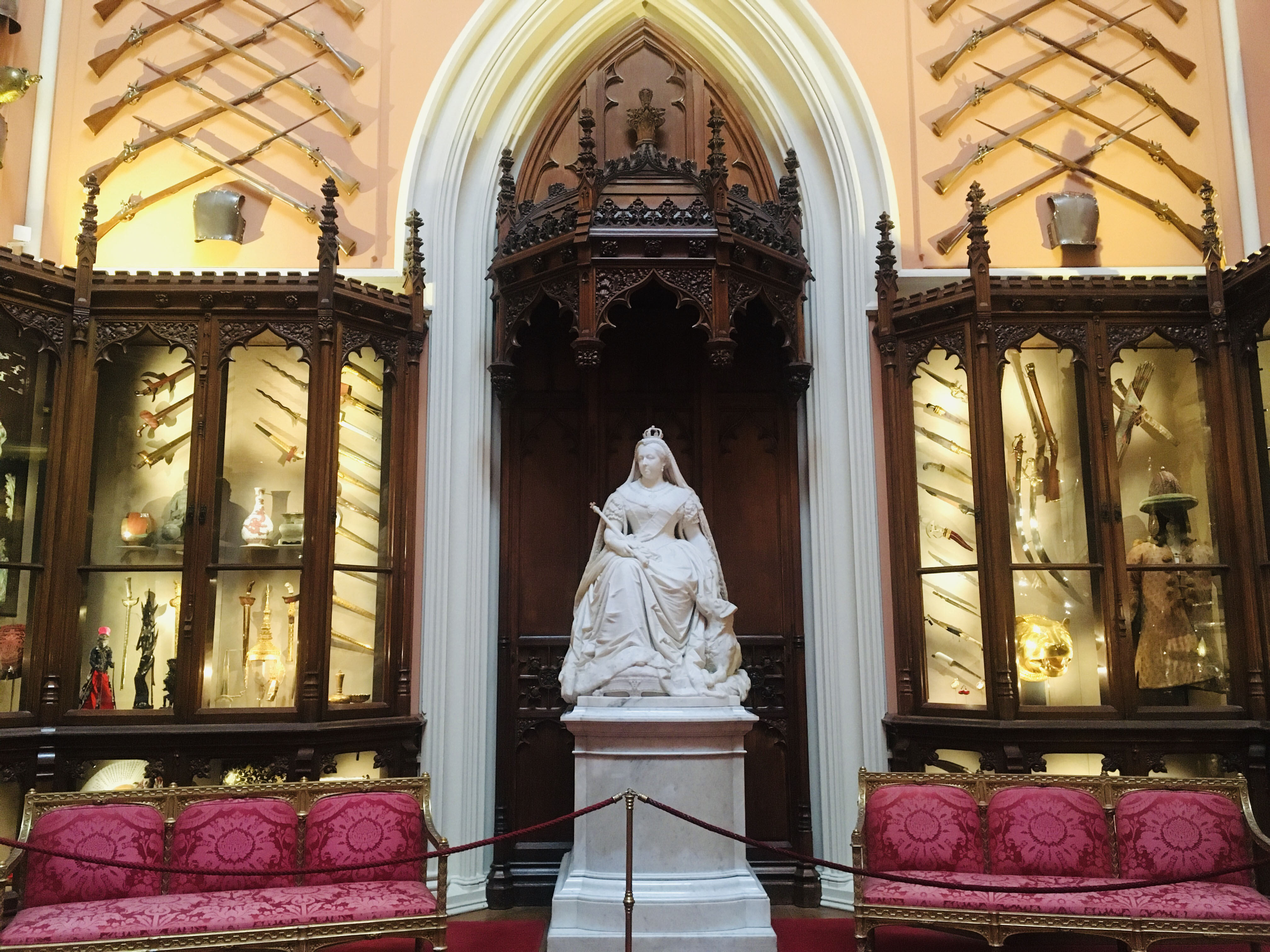
Grand Vestibule: The British Monarchy and the World
The Grand Vestibule at Windsor Castle reflects interaction between the monarchy and the wider world
Queen Elizabeth II
1950-59RCIN 99919
A stylised Inuit stone and whalebone sculpture of Queen Elizabeth II wearing a floor-length long-sleeved green dress, holding an orb in her right hand and with a removable copper circlet on her head. The hands, neck and head of whalebone, with a copper ring on the fourth finger of the right hand; the left hand missing two fingers. The base is carved in relief with two bare feet.
Osuitok Ipeelee (1923-2005) (RCA), also known as Oshaweetuk, was one of the foremost Inuit sculptors of the twentieth century. Born into a family of carvers on Baffin Island, he established a reputation for fine stone carving which attracted the attention of James Houston, who brought Inuit handicrafts to an international audience in the mid-twentieth century. As one of Houston's earliest collaborators, Ipeelee was the first to produce Inuit prints in Cape Dorset and was heavily involved in the West Baffin Island Eskimo Cooperative. His most notable commissions included the official mace for the Council of the Northwest Territories in 1955, and a sculpture for Queen Elizabeth II presented during her tour in 1959. In 1978 he was elected to the Royal Canadian Academy of Arts.







